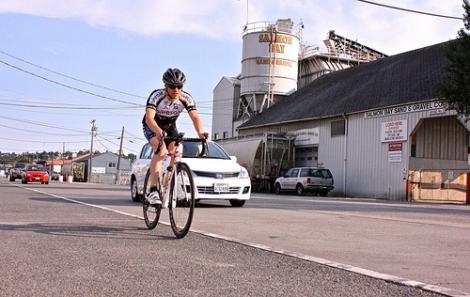SDOT says ‘count' on safer trails and streets for bicycle riders
Fri, 01/10/2014
Today, the Seattle Department of Transportation reported that they will be installing seven new bike counters in order to count ridership and find out how to better serve those riders.
The effort is part of broader action to make streets and trails safer and also includes constructing neighborhood greenways, protected bike lanes and multi-use trails; installing signs to guide people to their destinations; and putting in bike detectors at traffic signals.
“By creating comfortable places to ride bikes and connections to parks, schools and business districts, we hope more people will discover the practicality and joy of bicycling,” stated SDOT in the announcement.
The counters are different than the ones on the Fremont bridge in that they do not have electronic display totems, but SDOT says they are still “valuable” and will serve their purpose of counting riders and pedestrians.
"The counters consist of two small tube sensors stretching across the street, which are attached to a small metal counting box made by Eco-Counter. The tubes only count people riding bikes. They are very accurate and designed to be used on greenways"
SDOT stated that the counters will help create a ridership baseline in 2014 that can be used to assess and measure ridership in future years and help reach the goal of quadrupling ridership by 2030.
"While these bike counters may not offer the instant gratification of being visually counted like the Fremont and West Seattle counters, they are an important addition to SDOT's measurements of Seattle's progress toward getting more people to travel by bike. The more data we have, the better we'll be able to plan for and build a safe bicycling network for people of all ages and abilities," said Jeff Aken, Principal Planner at Cascade Bicycle Club in the SDOT announcement.
Kristen Simpson, SDOT Plan Implementation Manager, said in the statement that “It is important to use our limited funds wisely and data driven decisions help us do this. ... Collecting bike and pedestrian data helps guide our investments and measure our progress while building a transportation system that gives Seattleites great travel options.”
Three counters were installed on neighborhood greenways (see attached map):
26th Avenue Southwest at Southwest Oregon Street in Delridge
39th Avenue Northeast at Northeast 62nd Street in Wedgewood
Northwest 58th Street at 22nd Avenue Northwest in Ballard

Moreover, four counters have been located on multi-use trails (see attached map):
Elliott Bay Trail in Mrytle Edward Park
Burke-Gilman Trail north of Northeast 70th Street
Chief Sealth Trail north of South Thistle Street
Mountains to the Sound Trail west of the I-90 floating bridge
Counters in these locations count both people riding bikes and pedestrians. Separate tallies are taken for each travel mode. Wires in a diamond formation in the concrete sense bikes and an infrared sensor secured on a wooden post counts pedestrians. Direction of travel for both bikes and pedestrians is also counted detected.
Data collected from the counters will be downloaded monthly, and will be uploaded toData.Seattle.gov and available for public use starting in February. Counts are recorded in one hour intervals and will include a total overall count and, as available, a directional count.
The data counters installed on our multi-use trails will be used in the Rails to Trials Conservancy’s Trail Modeling and Assessment Platform (T-MAP, a $1.2 million, three-year initiative to create the next generation of trail planning data collection instruments, methodologies and analysis tools.
SDOT plans to install at least three more counters this year. Additionally, numerous one week counts will be conducted at selected locations throughout the city each year. The data from the permanent counters will enable estimates of annual bicycle volume to be calculated at the one-week count locations.
To learn more about Seattle’s bicycle plans visit www.seattle.gov/transportation/bikemaster.htmand to find out about programs Cascade Bicycle Club offers go to www.cascade.org.


